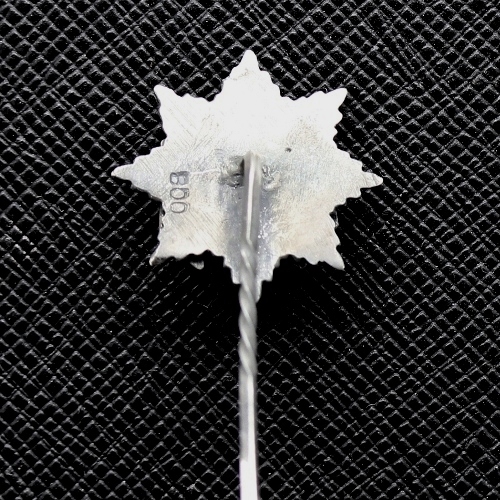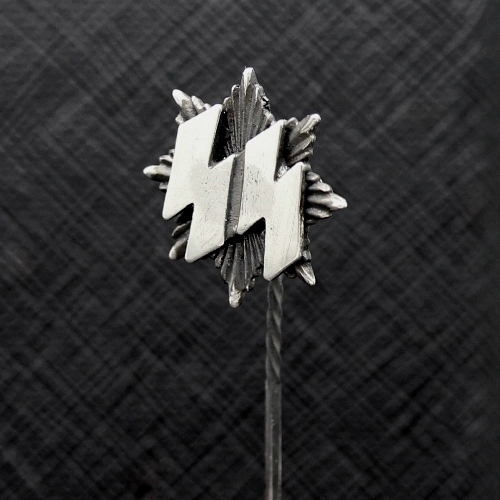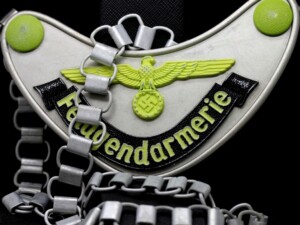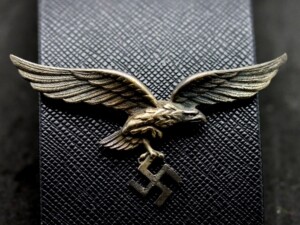Description
NAZI SS Stickpin
Stickpin sterling silver size approx 20mm x 20mm
SS Totenkopf (i.e. skull, literally dead’s head) is the German word for the skull and crossbones and death’s head symbols. The Totenkopf symbol is an old international symbol for death, the defiance of death, danger, or the dead, as well as piracy. It consists usually of the human skull with or without the mandible and often includes two crossed long-bones (femurs), most often depicted with the crossbones being behind some part of the skull.
It is commonly associated with 19th- and 20th-century German military use. See more SS Sterling Silver Black Corps SS Stickpin.
Toten-Kopf translates literally to “dead’s head”, meaning exactly “dead person’s head”. Semantically, it refers to a skull, literally a Schädel. As a term, Totenkopf connotes the human skull as a symbol, typically one with crossed thigh bones as part of a grouping.
Contemporary German language meaning of the word Totenkopf has not changed for at least two centuries. For example, the German poet Clemens Brentano (b. 1778 – d. 1842) wrote in the story “Baron Hüpfenstich”:
“Lauter Totenbeine und Totenköpfe, die standen oben herum …”[1] (i.e. “A lot of bones and skulls, they were placed above …”).
The common translation of “Totenkopf” as death’s head is incorrect; it would be Todeskopf, but no such word is in use. The English term death squad is called Todesschwadron, not Totenschwadron. It would be a logical fallacy to conclude that usage varies only because of the German naming of the Death’s-head Hawkmoth, which is called Skull Hawkmoth (Totenkopfschwärmer) in German, in the same way that it would be a fallacy to conclude that the German word Nachtkerze (i.e. night candle) would mean Willowherb, just because the Willowherb Hawkmoth (Proserpinus proserpina) is called Night Candle Hawkmoth (Nachtkerzenschwärmer, Proserpinus proserpina) in German.
More Sterling Silver Black Corps SS Stickpin see here: Ring SS
More info see here: Wikipedia.org





